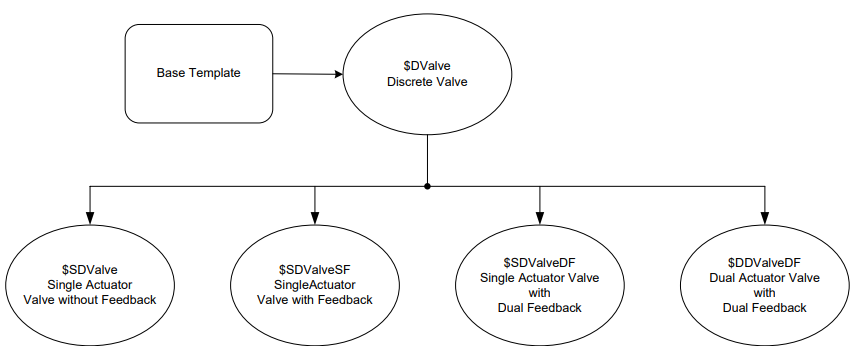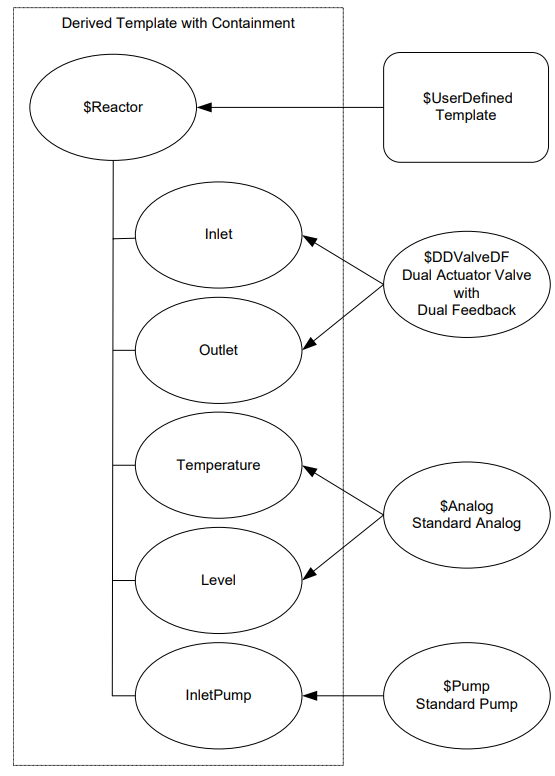Template Modelling Examples
The following information describes two template modeling examples:
Example 1
This example describes the model of a process that contains four discrete valve types. The valve types are determined from device requirements. To optimize engineering development, a common derived template called $DValve is developed (from the $DiscreteDevice base template) that contains all the shared discrete valve requirements.
A template for each discrete valve type is derived from that common template. The following figure illustrates how these templates are developed:

Use this practice to model valves on different manufacturers and their models.
A base valve template contains the fields and settings common to all valves within the facility. A new template is then derived from the base valve template for each manufacturer and contains vendor-specific settings.
Finally, a new template set is derived from the vendor-specific template for each valve model used in the facility. Once a model-specific template is available, instances will be derived from the template to represent the actual valves.
Example 2
This example describes a common, complex relationship called Reactor. Reactor is based upon an interaction of five field devices. Multiple instances of this relationship are used within the plant model.
The relationship can easily be developed using containment. Create a derived template called $Reactor from the $UserDefined base template.
Then, create template instances representing each of the five field devices. The complex relationship can now be developed (using scripting) in the container object ($Reactor) using the hierarchical names given to each field device. When instances of $Reactor are created as field devices, each has two names: the containment name (hierarchical name); and the physical name.
The following figure illustrates this practice:
